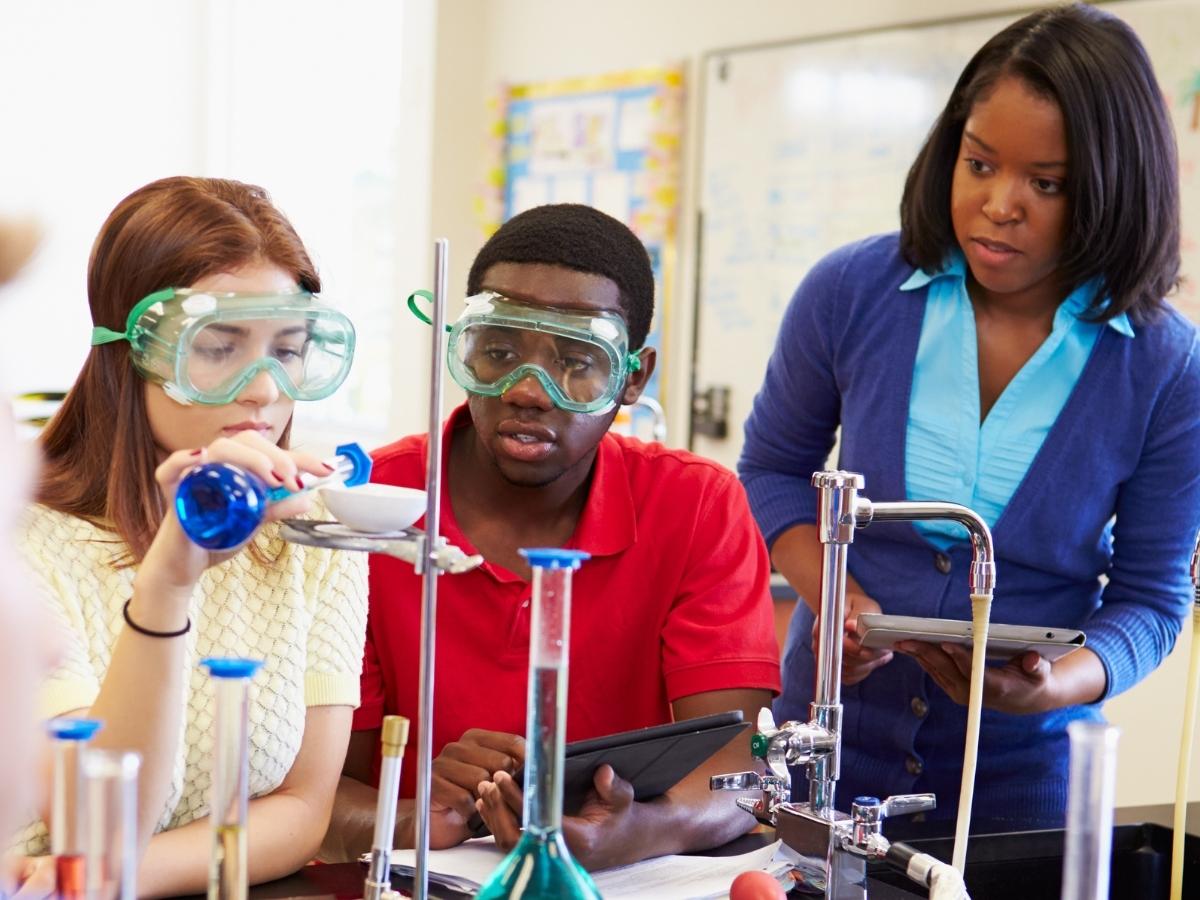The holiday is nearly upon us, giving us a bit of time to hopefully recharge. With a few more lessons to go, if you’re looking for ways to add a festive twist to your science practicals, or a few simple ideas to try at a STEM club, Stacey Wheeler shares her top ideas.
Physics practical: Santa mobile
Equipment: scissors, sellotape, cotton and various colours of A4 card
1. Cut out the shapes carefully using scissors. In this example I am going to use the following parts.
- Beard (white card)
- Nose (red card, because it is cold!)
- Moustache (white card)
- Eyes (any colour! What colour are your eyes?)
- Hat, with bobble and trim (Hat – red card; bobble and trim – white card).
2. Lay them out so you have the image you want to make. For other ideas, you could try a sleigh with reindeer dashing through the show or a collection of twinkly baubles?
3. Attach each part to the one above/below using the thin cotton. I have found that sticking the cotton down with sellotape works best. Start at the bottom and work your way to the top of Santa.
4. The last piece (in this case the hat) will need another bit of string which you use to attach to the ceiling about a radiator. This can be done using a pin, blu tac or sellotape. Remember to ask permission first!
As the radiator heats up, you will see Santa start moving. This is due to the rising hot air.
Chemistry practical: Crystal snowflake
Equipment: 3x pipe cleaners, 400ml beaker or glass, kettle, lots of sugar or salt, stirrer/spoon, string/twine, pencil/wooden spoon – something that will sit across your beaker, food colouring (optional), scissors.
1. Make a snowflake shape with your pipe cleaners by wrapping them around each other as close to the middle as you can to make a 6 point snowflake.
2. Cut it to size so that it will sit in your beaker without touching the sides and bottom. Leave one of the points a bit longer as you will need this to tie your string around.
3. Tie the string around your longer point and around the pencil/wooden spoon which will sit across your beaker. Again, it is important that it is not touching the sides or bottom.
4. Pour 100g of sugar or salt into a different beaker.
5. Boil the kettle. When boiled, carefully pour 400ml of boiling water over the sugar or salt and stir. Keep stirring until all the water is in the beaker and the sugar or salt has dissolved.
6. Carefully pour this solution into the beaker where your snowflake is sitting.
Find somewhere out of the way where the solution can sit and not be moved. It needs to be as still as possible for big crystals to form on the pipe cleaner.
Biology practical: Spongy Christmas tree
Equipment: Sponge, tray or plate, grass seeds, scissors, water
1. Cut the sponge into a tree shape.
2. Lay your tree sponge on your tray and soak with water.
3. Sprinkle grass seeds all over it.
4. Lightly water the seeds to make them damp. A spray bottle works well if you have one.
Make sure the sponge is kept damp over the next weeks, and you will soon have a tree that will sprout into a lovely green colour! My favourite bit is when it needs a hair cut, simply trim with some scissors.
Physics science practical: Light up cards
Equipment: copper tape, button battery 3202, LED (colour dependent on your picture), scissors, card, felt tips or crayons
1. Fold your piece of card in half.
2. Draw your picture on the front of the card. Pick one part that you would like to light up.
3. This next bit is tricky! Form a circuit from the battery to where your LED will be. The copper tape cannot overlap itself. It may be useful to use one of the printable versions of the circuits, but draw your own picture!
4. Poke your LED through and make sure that the battery is placed at the opposite end of the circuit.
What happens if the circuit isn’t complete? What happens if a switch was placed in this circuit? What would happen if the battery isn’t attached correctly?
From this experiment you could also look at how Christmas tree lights work, are they series or parallel? What are the pros and cons of these?

Author: Stacey Wheeler, Senior Science Technician



